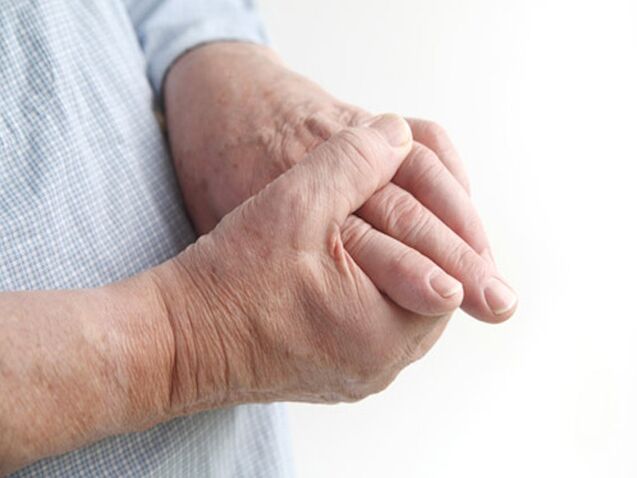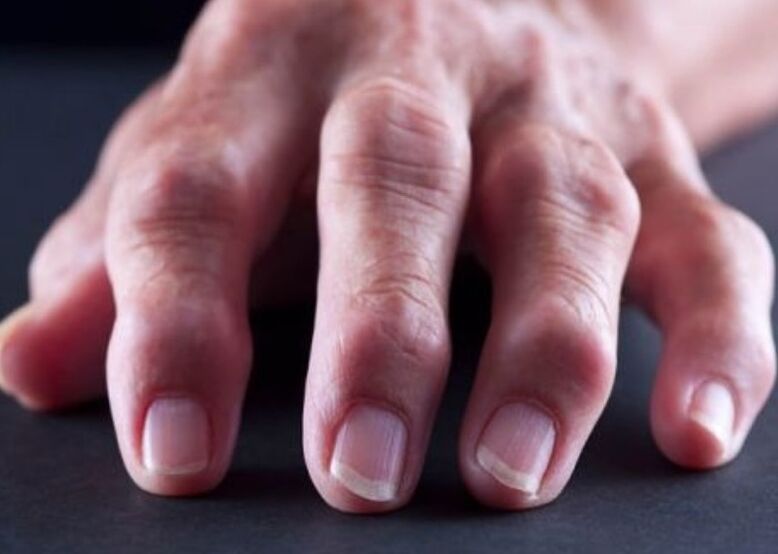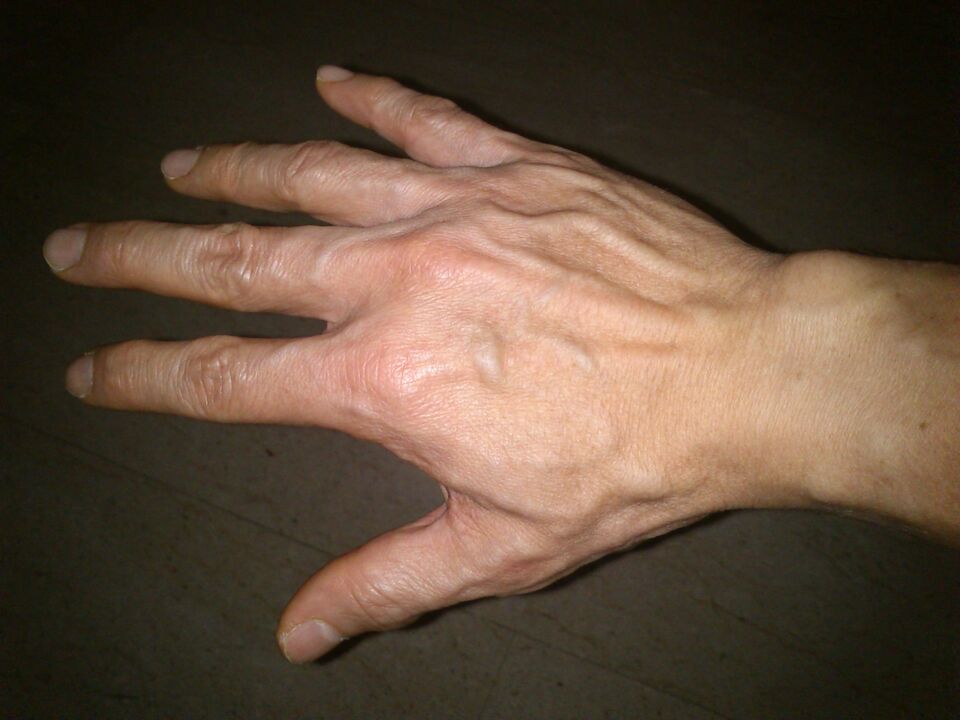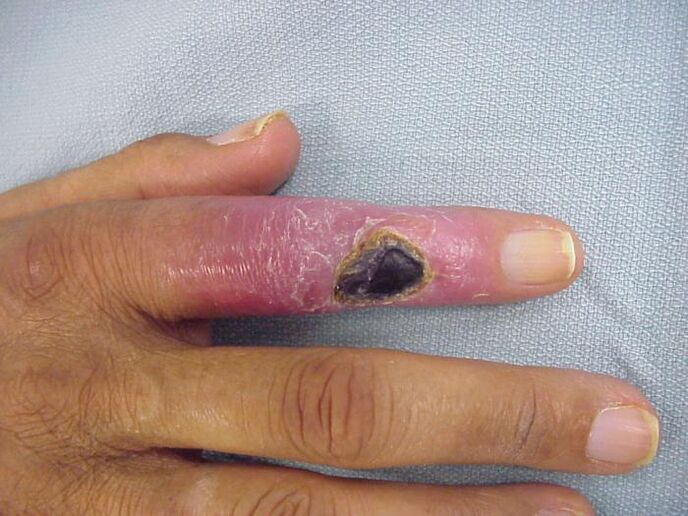Brushes are considered to be the most mobile part of the human body. Thanks to the large change in range of motion, it becomes possible to perform the finest work with the smallest details. This is why it is important to keep your hands healthy at all times. Today many people, including the younger generation, complain of joint pain in their fingers. In some cases, it becomes so strong that a person literally loses the ability to make the usual movements.
General Information
The human hand can be divided into three distinct sections: the wrist, the wrist and the fingers. The metacarpus is made up of eight small, irregularly shaped bones. They are all arranged in two rows. The metacarpus is represented by five tubular bones, each of which has a base, body and head. The bases connect to the wrist and the heads form joints with the phalanges of the fingers. The latter, in turn, consist of three phalanges. The exception in this case is the thumb. It has only two phalanges.

Human hands are considered to be extremely delicate and at the same time precise tools. The fingers are precisely the means that allow coordinated movements. Without them, normal life is not possible. All these movements are due to joint mobility. However, due to the high daily activity, this area is at great risk of developing completely different ailments, mechanical damage and injuries. Joint pain in the fingers, as a rule, accompanies this type of pathological changes. Treatment in this case depends solely on the factor that provoked the onset of discomfort.
Main reason
According to experts, pain in the joints of the fingers can be caused by a wide variety of reasons. The most common violations are listed below:
- Arthritis.
- Arthrosis.
- bursitis.
- Mechanical damage and injuries.
- Osteomyelitis.
Arthritis
Arthritis refers to acute or chronic joint inflammation. Isolated finger injuries are very rare. As a rule, in such patients, the pathological process also affects other joints. Arthritic pain in the affected area is characterized by intensity. They arise not only with the movement of the fingers, but also at rest. Also, in the areas affected by arthritis, there is the appearance of severe edema, a change in the usual skin tone.
- Rheumatoid arthritis. This is a connective tissue disease of an infectious and allergic nature, which is predominantly systemic in nature. The impetus for the onset of this ailment are severe colds, frequent stress and hypothermia. Rheumatoid arthritis begins with pain in the joint of the index finger. The affected areas swell, patients complain of fever, a feeling of weakness, chills.
- Psoriatic arthritis. As a rule, this type of pathology develops in those patients who already have psoriatic manifestations on the skin. These are dry scaly patches with a reddish tinge. With the development of the disease, the finger acquires a purple hue and a sausage-like shape.
- Gouty arthritis. Gout is understood as a fairly common disease characterized by metabolic disorders, namely purines. According to experts, such ailment can be triggered by an increase in the level of uric acid and the subsequent deposition of its salts directly in the joint tissues. Typically, a gouty attack begins with severe discomfort in the big toe joint. In the absence of timely treatment, the pathology spreads to other joints. Gout attacks most often occur at night. They are characterized by a rise in temperature around the affected area and severe pain. The disease progresses very rapidly. After a while, the patient may experience joint pain in the fingers of both hands. Typically, the duration of a typical attack of the disease ranges from two to about 14 days.

Osteoarthritis
This disease is formed as a result of the sequential destruction of cartilage tissue in the area of the joint surface. In the case of this pathology, painful discomfort initially occurs only after prolonged physical exertion. So, with the progression of the disease, the intensity of pain increases, it can appear even at night.
Osteoarthritis of the fingers is a fairly common problem. Even insignificant damage can become an impetus for its development. In the process of developing the disease, the fingers can change their usual shape, while bending to the side.
Rizarthrosis. With the development of this disease, the joint located at the base of the thumb is affected, which also connects the wrist bone to the metacarpal bone. This disturbance occurs due to the overload of this area. Pain in the thumb joint, visual deformity of the bones are the most common symptoms of this pathology.

bursitis
Inflammation of the so-called joint bags of the fingers, accompanied by the accumulation of fluid in their cavity, is called bursitis. This pathology is characterized by painful sensations in the affected area, the appearance of edema, redness. The main symptom of bursitis is the formation of a round swelling in the joint area, which is characterized by a soft consistency. It is easily identifiable visually.
With a prolonged course, bursitis often turns into a chronic stage. In this type of situation, the deposition of salts in the affected area joins the inflammatory process. All this, as a rule, causes pain in the joints of the fingers.
If the cause of the problem is an injury to the hand, then the pathological microflora often joins the inflammatory process. In this case, we are talking about the development of purulent bursitis. It is accompanied by a rise in temperature, headache and weakness throughout the body.

Injuries and mechanical damage
The displacement of the bones in the joints is called dislocation. Very often athletes are faced with this problem. It is accompanied by the following symptoms: severe swelling of the affected area, joint deformity and severe pain syndrome.
The most common injury is a dislocated thumb. Such a detached disposition exposes him to any wrong movement every time. The thumb, however, is characterized by a powerful ligament apparatus and is distinguished by a certain load threshold, after which stretching occurs. All this involves a displacement of the articular surfaces.
The most common cause of a thumb dislocation is an unfortunate fall on an open palm. It is very easy to determine the presence of this problem, as the affected area appears externally deformed. Severe pain in the thumb joint can interfere with normal activities, work and sports. The skin in this part, as a rule, acquires a reddish tinge.
Osteomyelitis
A purulent process affecting the joints and nearby soft tissues is called osteomyelitis. This pathology develops due to the penetration of bacteria into the body, constantly producing pus.

Acute osteomyelitis usually begins with a rise in temperature of up to 40 degrees. The patient's condition deteriorates very quickly, which is caused by severe intoxication of the body. In addition, the patient may experience the following symptoms: joint pain in the fingers, chills, loss of consciousness, vomiting.
During the first two days, the pain in the hands gradually increases. Active finger movements are generally impossible. The pathology is progressing rapidly, which is expressed in the occurrence of edematous phenomena in the muscles of the hand and even in the forearm. The skin in the affected area turns purple.
Diagnostics
Timely request for advice from a specialist, competent diagnosis and treatment - all these factors allow you to determine the disease and prevent its further progression, the development of serious complications. You should not ignore pain in the joints of the fingers, as even a minor pathology can lead to a complete loss of movement and make the patient disabled. The following diagnostic measures may be needed to identify the problem:
- Hand x-ray.
- Blood (clinical / biochemical) and urine tests.
- Determination of the amount of purines.

What should be the treatment for finger joint pain?
Regardless of the true cause of the pathology, therapy should be comprehensive and simultaneously solve three problems: treatment of the main disease, restoration of the primary function of the hand and pain relief.
Of course, the fight against this or that ailment depends on its nature. In any case, the doctor prescribes the appropriate treatment. However, the relief of discomfort in the hand and its functional development are subject to general rules.
To relieve discomfort, modern medicine offers a variety of drugs. Most often, non-steroidal anti-inflammatory drugs are prescribed.
To eliminate pain due to autoimmune diseases (for example, rheumatoid arthritis), glucocorticoid hormones are used. They have excellent anti-inflammatory effects and provide the desired relief relatively quickly.

Special ointments containing anesthetic components can somewhat increase the effect of drugs.
Conclusion
In conclusion, it should be noted that you should not ignore the pain in the joints of the fingers. The treatment offered by modern medicine is very often effective in combating this problem. The main thing is to seek medical help in a timely manner and undergo the necessary diagnostic examination. Be healthy!




































